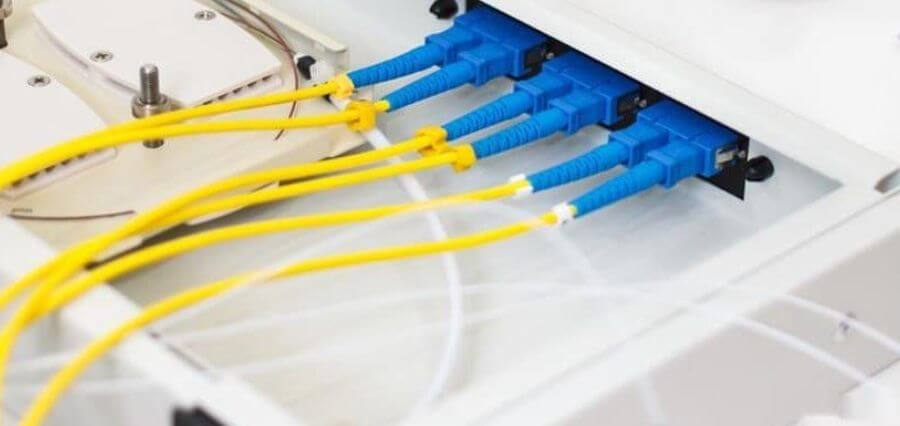Introduction
A fiber distribution box, also known as a fiber distribution frame (FDF) or fiber optic cross-connect (FOCC), is an enclosure used to interconnect and protect optical fibers in a structured cabling system. It enables the distribution of optical signals from one point to many points, and vice-versa, through the use of splices, patch cords, and patch panels. Fiber distribution boxes are a vital component of any fiber optic network, as they enable the efficient and reliable transmission of light signals. This article will provide an overview of fiber distribution boxes, including their design, features, and benefits, as well as how to ensure optimal performance.
Design and Features
Fiber distribution boxes are typically made of metal or plastic and come in a variety of sizes, depending on the number of fibers they are designed to accommodate. They can be either wall-mounted or rack-mounted, and can accommodate up to 96 fibers in a single box. The front of the box has a clear panel that allows for easy viewing of the patch panel, splices, and patch cords. The back of the box houses the power supplies and control modules, which provide power to the splicing and patching components.
Fiber optics distribution hubs are designed to protect the fibers from potential damage due to environmental factors, such as dust, water, and extreme temperatures. The box is sealed to prevent dust and water from entering, and it is also designed to dissipate heat, as heat can cause fiber degradation over time. Additionally, the box is designed to prevent accidental disconnection of fiber connectors.
Benefits
Fiber distribution boxes provide a number of benefits, including improved physical security, easier installation, and improved network performance.
Physical Security: The box protects the fibers from physical damage, as well as theft or tampering. This is especially important in areas with high traffic or public access, where unauthorized persons could potentially access the fibers.
Easier Installation: Fiber distribution boxes make the installation process easier, as they provide a centralized point for the connection of patch cords and splices. This eliminates the need for multiple patch panels and reduces the amount of time needed to install or reconfigure a network.
Improved Network Performance: By providing a secure, centralized point for the connection of patch cords and splices, fiber distribution boxes help improve the performance of the network. This is due to improved signal transmission and less signal loss due to the better physical protection of the fibers.
Ensuring Optimal Performance
In order to ensure optimal performance, it is important to properly maintain and inspect fiber distribution boxes. This includes regularly checking the fiber connections for any signs of physical damage or corrosion, as well as ensuring that the box is properly sealed to prevent dust and water from entering. Additionally, it is important to inspect the patch cords and splices for any signs of wear and tear, as this can lead to signal loss and degraded performance.
Conclusion
Fiber distribution boxes are a vital component of any fiber optic network, as they enable the efficient and reliable transmission of light signals. They are designed to protect the fibers from potential damage due to environmental factors and provide a centralized point for the connection of patch cords and splices. Additionally, fiber distribution boxes provide improved physical security, easier installation, and improved network performance. To ensure optimal performance, it is important to properly maintain and inspect fiber distribution boxes.









